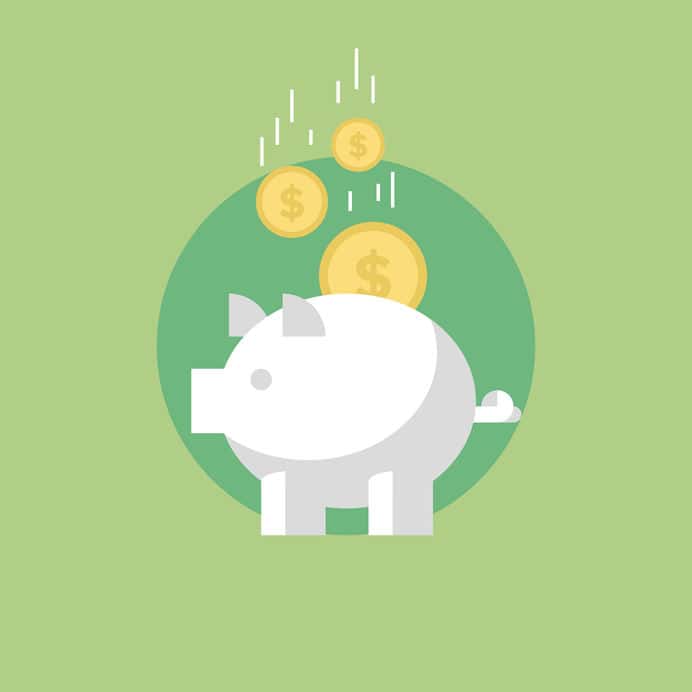Month: September 2017
The common myth that the mortgage loan process is a nightmare is just that…a myth. Though it is a process, it can easily be broken down into six key phases: pre-approval, house shopping, mortgage application, loan processing, underwriting, and closing. At Assurance Financial, our goal is to help you realize your dream home and our team of home loan experts are here to help you along the way. Let’s dive in and help you understand the six phases before you begin the process:
1. Mortgage Application
Before you start your mortgage application, obtain copies of your most important financial documents. Lenders review your application to see if you’re financially prepared to handle a mortgage and pay it back over time. Your application is examined by lenders seeking information about your sources of income, credit history, job history and self-employment income. If you are self-employed, they’ll need to see your last two tax returns to prove consistent income.
After you’ve completed the loan application, your lender will verify the information you’ve provided. Expect to receive a loan estimate and a commitment letter from your lender shortly after submitting your application.
2. Housing Payment/Debt-to-Income Ratio
Lenders also consider your debt-to-income (DTI) ratio before pre-approval. Dividing your projected total housing payment by your gross monthly income produces a figure known as a front-end DTI ratio. Including your current monthly liabilities along with the proposed monthly housing payment in the calculation generates your back-end or total DTI ratio. The ideal front-end DTI to back-end DTI ratio is about 25%/41%. More conventional loans will allow a back-end of 50%, and FHA will even allow 56.99%.
3. House Shopping
It takes time to find the right home. At the beginning of the house shopping process, you should make a list of the things you need to have in your future home. Start by considering how many bedrooms and bathrooms you’ll require and always take into account how your family may grow in the future. Will you need a large backyard for your children or pets to play? After considering the basics, take some time to determine what kind of neighborhood you’d like to live in. Gather details on local school districts, shopping centers, commute times, and any safety concerns.
4. Loan Processing
Next, your loan is sent over to the loan processors. Once it’s in their hands, they begin double-checking everything on your application. The processor will prepare and organize the file before it’s sent over to the bank or mortgage lender for approval. They will contact your employer to verify your job and the salary on your application. If there are any questions regarding the information on your application, they will have your loan officer contact you for details. Any mistakes you’ve made will arise during this stage, giving you a chance to make corrections before the file is handed off to the underwriter.
[download_section]
5. Underwriting
The underwriter will examine your application to determine whether you’re a risk to the lender. Your income, debt, and credit history are the greatest factors in the underwriting process. Your total monthly debt obligations, including the potential mortgage payment, shouldn’t be more than 43% of your pre-tax monthly income.
6. Closing
Once you’re approved, the realtor will complete a final walk-through to ensure all contingencies are met. Closing is next! Along with a representative, you’ll sign all the final documentation and verify the money from the sale is properly distributed. The closing officer will review the mortgage note and the mortgage document with you, then move on to the closing disclosure.
Next, they will review the deed and the commitment for title insurance. The final activity is the distribution of the money from the sale. The closing agent will issue checks to the sellers, the seller’s lender, the real estate agent, and any other person indicated on the closing disclosure. Once you’ve signed all the documents and made the appropriate payments, the closing is finished and the home is yours!
Purchasing a home is one of the biggest decisions an individual will make in their lifetime. No matter where you are in your life, it’s a process that requires experts and those interested in the best outcome for you. Our loan officers are here to help you find the best mortgage possible. Find a loan officer near you today!
So, you’re ready to buy a house, but you don’t know what type of loan you need. The type of loan you end up choosing shapes the future of your homeownership. Here’s a rundown of loan programs that are the most common:
Conventional Loans
Conventional loans are the most popular and economical loans available. A conventional loan is a mortgage that isn’t guaranteed or insured by any government agency. The loan typically includes fixed terms and rates. Borrowers typically need a pretty good credit score to qualify for a conventional loan along with a minimum of 3% down payment. The maximum loan amount for a conventional loan is $424,100. If the homeowner makes a down payment of less than 20% on the home, then lenders will require private mortgage insurance (PMI). PMI is configured by the lender and protects them if you stop making payments at any time. Once the loan-to-value ratio reaches 80% on a conventional loan, PMI is no longer required.
FHA Loans
An FHA loan is a mortgage insured by the Federal Housing Administration. These loans are popular thanks to high DTI (debt-to-income) ratio maximums, and many lenders approve borrowers with credit scores as low as 580. FHA loans typically require a down payment of at least 3.5% and offer low rates that usually sit about .25% lower than conventional loan rates. The national maximum loan amount for an FHA loan is $294,515 but varies by county/parish. In high-cost areas, county-level loan limits can be as high as $679,650. Lenders require two mortgage insurance premiums for FHA loans: The upfront premium is 1.75% of the loan amount, and the annual premium varies based on the length of the loan. The monthly mortgage premium is .85% of the base loan amount for the remainder of the loan.
USDA Rural Housing/Rural Development (RD) Loans
USDA loans are issued through the government-funded USDA loan program. The government designated these loans for homes in rural areas. The program focuses on improving the economy and quality of life in rural America. USDA loans typically offer lower rates than conventional loans and hold several similarities to FHA loans. The income limit for USDA loan recipients is $78,200 for a one to four person home and $103,200 for a household of five or more. Mortgage insurance for a USDA loan requires a 1% upfront fee of the loan amount, and a monthly mortgage insurance fee equal to 0.35% of the loan balance. As with the loan limits, income limits will also vary based on parish/county.
Veterans Affairs (VA) Loans
VA loans have helped more than 21 million veterans, service members, and surviving spouses achieve the dream of home ownership. This benefit – most praised by home buyers for offering $0 down, low rates, and removing the added cost of mortgage insurance – is made possible by the U.S. Department of Veterans Affairs guaranteeing a portion of each loan in case of default. Veterans who are eligible for a VA loan have what is referred to as VA loan entitlement, which is a specific amount that the Department of Veterans Affairs promises to guarantee. This entitlement is what gives lenders the confidence to extend VA loan financing with exceptional rates and terms. However, to be eligible for the VA loan, potential home buyers must first meet the basic service requirements.
The type of home, its location, and your situation are all factors that determine the type of loan that is right for you. If you need guidance, Assurance Financial’s loan officers are home loan experts who can help. Contact us today!
[download_section]
Building credit takes careful planning and due diligence to avoid unnecessary mistakes, like missed payments. Though it requires careful attention, it is not impossible. If your credit isn’t where you want it to be, you should evaluate your current status and develop a game plan if you plan on purchasing a home in the future (and even if you’re not, it’s good to know how to build your credit so that it works for you!)
Credit Cards
One of the easiest ways to build credit is to use your credit card regularly and responsibly. Making your monthly payments on time and in full is positively reflected in your credit score. Every payment you make is reported to credit bureaus, regardless of whether you’ve made it on time or not. Paying each bill helps you build a positive credit profile, demonstrates that you’re capable of meeting a creditor’s conditions, and usually comes with some great perks! Though credit cards offer regular users rewards, like cash back, travel credits, and reward cards based on the user’s spending habits. They also give you the option to make large purchases upfront, which commonly leads many users to rack up debt fast. Credit card holders should be mindful of deadlines and late payment fees to avoid high spending.
Car Loans & Buying Pre-Owned
Introducing a car loan to your credit line helps diversify your credit profile and gives you the opportunity to boost your credit score.
Making each payment on time helps you build credit, however being late on just one payment can potentially negatively impact your credit score. Steady, reliable payments paint you as more trustworthy to lenders. Before you drive off the lot in a brand-new car, consider purchasing a pre-owned vehicle instead. Research shows cars depreciate by about 60% in just five years. In most cases, dealers offer extended warranties and special financing with the purchase of a pre-owned car.
Student Loans
Student loans are installment loans, which are a bit different than revolving credit, like credit cards.
Lenders offer these types of loans to users upfront, all at once, then require them to pay the amount back over a set period through regular installments. Car, mortgage, and home equity loans all fall into this category, but student loans are typically the first installment loans most people encounter.
Starting off your credit history with on-time student loan payments reflects positively on your credit score. Student loan borrowers can use their loans as a base to build up a good credit profile. If you do have student loans, be sure to always pay on time, and stick to a payment fee you can afford.
Mortgage Loans
Buying a home is likely the biggest and most important purchase most people make in their lives.
A mortgage loan helps people build credit, as long as they make their payments routinely and on-time. Despite being the biggest debt, most people owe; mortgage loans are considered good debt. Your home is a physical asset backing the loan. If you miss a payment, the lender can repossess the home, meaning a mortgage is a relatively safe investment for them. Paying your mortgage will boost your score and show creditors you’re a trustworthy borrower. Applying for a mortgage will initially lower your credit score. The application will trigger a hard credit inquiry, which only temporarily lowers your credit score for about 45-days.
Slowly and steadily, you can build up your credit. It takes time, but it is not completely impossible. If you’re looking to purchase a home in the future, create a game plan and stick to it. Showing consistency and responsibility is a factor when Loan Officers consider when determining a home mortgage loan. If you need more information, contact one of Assurance Financials’ home loan experts today!
[download_section]
You may be wondering what creditors take into account when determining your credit score. There are five factors involved in calculating your credit score, each varying in importance and value to credit scoring models. Here are the five more common criteria of what determines your credit score:
1. Payment History (35%)
The most important factor in determining your credit score is whether you pay your bills on time. Credit scoring models examine all the credit you’ve already been extended, including credit cards, auto loans, installment loans and any other line of credit. Any late or missed payments are noted and may negatively impact your credit score.
2. Debt/Amounts Owed (30%)
The second most important determining factor is the balance-to-limit ratio on your credit cards. Models will examine how much of the total credit line you’re using on all of your credit cards. In general, you should try to keep your utilization rate below 30% to avoid lowering your credit score. Keeping your balance below 108 will help you achieve a higher score.
3. Age of Credit History (15%)
The credit score calculation also reviews the age of every account you hold. Scoring models favor users who show they’ve been able to handle several credit accounts over time without penalties, late fees or closures.
4. New Credit/Inquiries (10%)
Your credit score will also reflect how much credit you’ve received or applied for recently. Any credit you’ve applied for within the past three to six months or new inquiries from creditors are recorded and used during calculations. The scoring model doesn’t consider requests a creditor has made to review your credit file or score to build a preapproved credit offer. Nor does it account for any personal requests you’ve made for a copy of your credit history.
5. A mix of Accounts/Types of Credit (10%)
Creditors like to see you’ve been able to balance multiple tradelines of different types. The scoring algorithm examines the types of credit accounts you have, including revolving debt and installment loans.
The above are the most common factors determining your Credit Score. Be aware that your Credit Score is one of a number factors we consider when determining your home mortgage loan. The best way to know if you qualify, and for how much, would be to discuss your situation with one of our home loan experts. Contact an Assurance Financial Loan Officer now!
[download_section]




